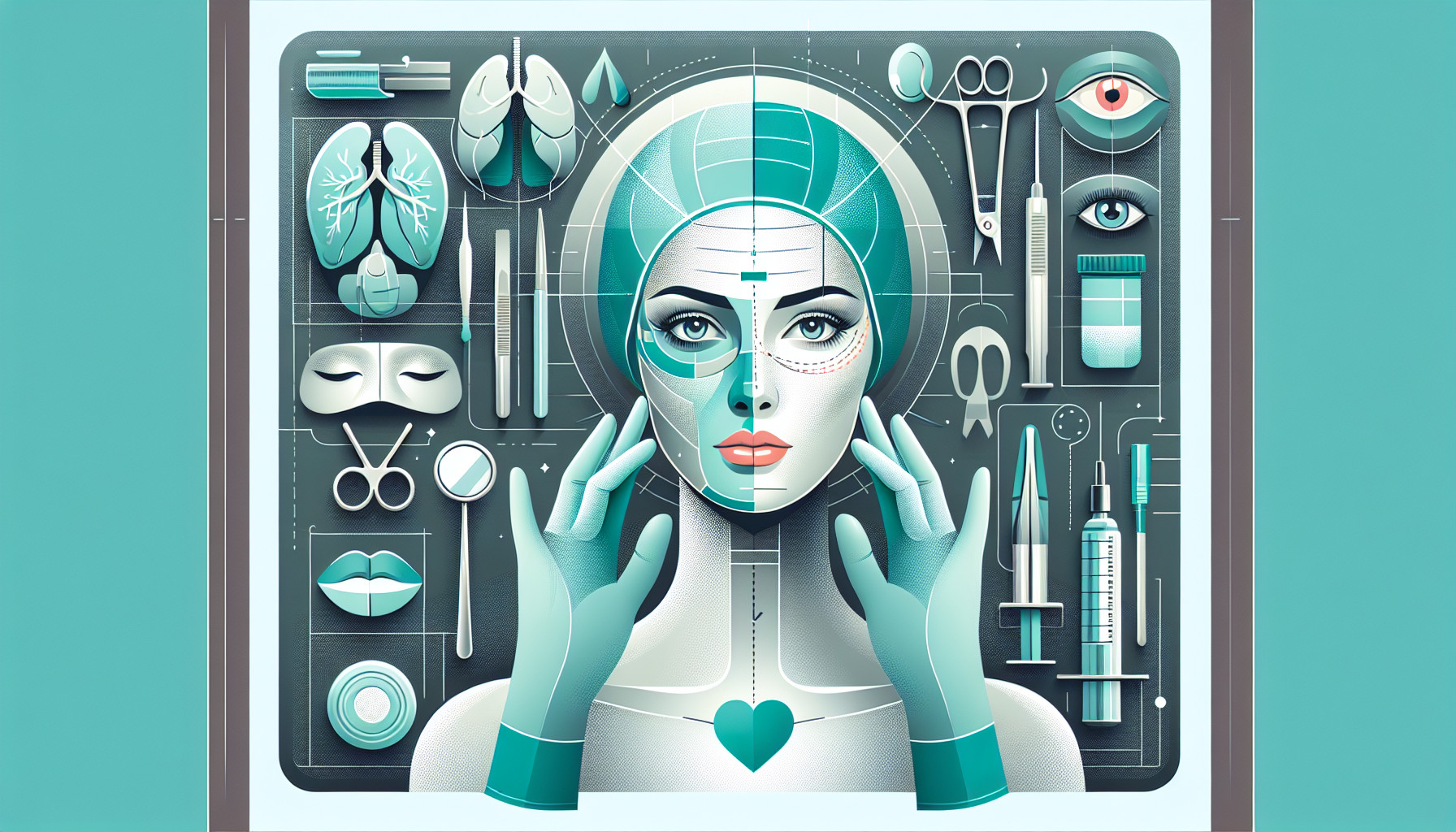Our Summary
This article is about blepharoplasty, a popular cosmetic surgery that changes the appearance of the upper or lower eyelids. The authors present a simplified method for this procedure that is based on the unique needs of each patient.
In recent years, the trend in eyelid surgery has been to keep or even add to the natural volume of the eyelid, instead of reducing it. For the upper eyelid, this involves removing any excess skin and carefully adjusting the fat around the eye. It’s important to avoid creating a sunken look in the upper eyelid, and sometimes fat or fillers are added to increase volume.
For the lower eyelid, the procedure can be done through an incision in the skin or from the inside of the eyelid, and adjusts the fat pads in the eyelid. The procedure also involves improving the transition between the lower eyelid and the cheek, sometimes by adjusting the connective tissue and adding fat or fillers.
The risk of complication for the upper eyelid surgery is quite low, especially if the surgeon is careful with skin removal and maintaining volume. The lower eyelid surgery can have more serious risks, like misplacement of the eyelid, so it’s important to be very careful.
By using this patient-centered method, the authors believe that eyelid surgery can be made simpler with consistent and reliable results.
FAQs
- What is blepharoplasty and why is it performed?
- What are the risks associated with upper and lower eyelid surgery?
- How has the trend in eyelid surgery changed recently?
Doctor’s Tip
One helpful tip a doctor might tell a patient about blepharoplasty is to follow all pre-operative and post-operative instructions closely to ensure the best results and reduce the risk of complications. This may include avoiding certain medications, quitting smoking, and properly caring for the incision sites after surgery. Additionally, it’s important to have realistic expectations about the outcome of the surgery and to communicate openly with your surgeon about your goals and concerns.
Suitable For
Patients who are typically recommended for blepharoplasty include those who have excess skin or fat in the upper or lower eyelids, resulting in a tired or aged appearance. Other common reasons for blepharoplasty include droopy eyelids, puffiness, and bags under the eyes. Patients may also seek blepharoplasty to improve their vision if droopy eyelids obstruct their field of vision. Overall, candidates for blepharoplasty should be in good overall health and have realistic expectations for the outcome of the procedure.
Timeline
Before blepharoplasty, a patient will typically have a consultation with a plastic surgeon to discuss their goals and expectations for the surgery. The surgeon will evaluate the patient’s eyelids and overall facial structure to determine the best approach for the procedure.
On the day of the surgery, the patient will undergo the blepharoplasty procedure, which can take a few hours depending on the extent of the surgery. Local anesthesia or sedation may be used to ensure the patient is comfortable during the procedure.
After the surgery, the patient will experience some swelling, bruising, and discomfort in the eyelid area. Pain medication and cold compresses can help manage these symptoms. The patient will also need to follow post-operative instructions provided by the surgeon, including avoiding strenuous activities and wearing sunglasses to protect the eyes from sun exposure.
Over the following weeks, the swelling and bruising will gradually subside, and the final results of the blepharoplasty will become more apparent. The patient may need to attend follow-up appointments with the surgeon to monitor their healing progress and address any concerns.
Overall, the timeline for a patient before and after blepharoplasty can vary depending on the individual and the extent of the surgery, but most patients can expect to see significant improvement in the appearance of their eyelids within a few weeks to months after the procedure.
What to Ask Your Doctor
Some questions a patient should ask their doctor about blepharoplasty may include:
- Am I a good candidate for blepharoplasty?
- What are the potential risks and complications associated with this surgery?
- What is the recovery process like, and how long will it take for me to see results?
- Will I need to have any follow-up appointments after the surgery?
- What type of anesthesia will be used during the procedure?
- Can you show me before and after photos of previous patients who have had blepharoplasty?
- How much experience do you have performing blepharoplasty procedures?
- What is the cost of the surgery, and does it include any additional fees for follow-up care or medications?
- How long will the results of the surgery last?
- Are there any alternative treatments or procedures that may be more suitable for my specific goals?
Reference
Authors: Zoumalan CI, Roostaeian J. Journal: Plast Reconstr Surg. 2016 Jan;137(1):196e-213e. doi: 10.1097/PRS.0000000000001906. PMID: 26710052
